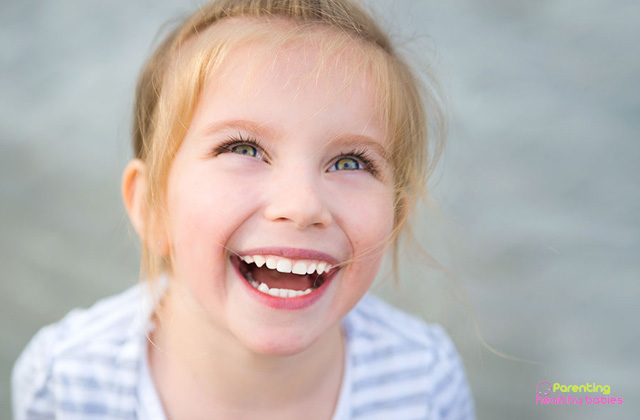A chromosomal abnormality, in which some or all of the cells of the body contain extra genetic material from chromosome 13. The extra genetic material disrupts normal development, causing multiple and complex organ defects. Brain or spinal cord abnormalities, heart defects, small or poorly developed eyes, extra fingers or toes, an opening in the lip with or without an opening in the roof of the mouth, and weak muscle tone is often seen in individuals with trisomy 13.
Life-threatening medical problems are present, many infants with trisomy 13 die within their first days or weeks of life. Only five percent to 10 percent of children with this condition live past their first year. Like all nondisjunction conditions (such as Down syndrome and Edwards syndrome), the risk of this syndrome in the offspring increases with maternal age at pregnancy, with about 31 years being the average. Patau syndrome affects somewhere between 1 in 10,000 and 1 in 21,700 live births.
Trisomy 13: Symptoms,Causes,Risk,Diagnosis and Treatment
Signs and symptoms
Adolescent female with full trisomy 13 and associated facial features. While most affected people die in infancy, some survive for months or years.
- Six fingers in a baby with Patau syndrome
- Sloping forehead with a nose superior to a single central palpebral fissure are included in facial features :Cyclopia with Alobar holoprosencephaly male with trisomy 13 at 37 week gestation.
- Of those fetuses that do survive to gestation and subsequent birth, common abnormalities may include:
Nervous system
- Intellectual disability and motor disorder
- Microcephaly
- Holoprosencephaly (failure of the forebrain to divide properly).
Structural eye defects
- microphthalmia
- Peters’ anomaly
- cataract
- iris or fundus (coloboma)
- retinal dysplasia or retinal detachment
- sensory nystagmus
- cortical visual loss
- optic nerve hypoplasia
- Meningomyelocele (a spinal defect)
- Musculoskeletal and cutaneous
- Polydactyly (extra digits)
- Cyclopia
- Proboscis
- Cleft palate
Kidney defects
- Urogenital
- Abnormal genitalia
Heart defects
- ventricular septal defect
- Patent Ductus Arteriosus
- Dextrocardia
- Single umbilical artery
Causes
At conception or before conception of Robertsonian translocation the part of chromosome 13 becomes attached to another chromosome (translocated) results in Patau syndrome .Affected people have two copies of chromosome 13, plus extra material from chromosome 13 attached to another chromosome. Partial trisomy for chromosome 13 seen in the individual and often the physical signs of the syndrome differ from the typical Patau syndrome with the translocation.
Most cases of Patau syndrome are not inherited, but occur as random events during the formation of reproductive cells (eggs and sperm).Mosaic Patau syndrome is also not inherited. This is a random error during cell division early in fetal development.
Patau syndrome due to a translocation can be inherited. The carrier person (unaffected ) can carry a rearrangement of genetic material between chromosome 13 and another chromosome.This is a balanced translocation because there is no extra material from chromosome 13. They do not have signs of Patau syndrome, people who carry this type of balanced translocation are at an increased risk of having children with the condition.
Recurrence risk
The likeliness of a couple having another trisomy 13 affected child is less than 1% (less than that of Down syndrome), Since one of the parents is a carrier of a translocation.
The characteristics of this syndrome are problems such as late development, mental disability, multiple malformations, cardiomyopathy, and kidney abnormalities.
The tone down of muscle tone, small hands, small ears, small head and mouth, as well as wide and short hands with short fingers are the signs of patau syndrome .
Diagnosis
The Fetal chromosome testing will show trisomy 13, diagnosis is usually based on clinical findings. The trisomy 13 findings is similar to Edwards syndrome there are a few unique traits, such as polydactyly. Far apart from Edwards syndrome and Down syndrome, the quad screen does not provide a reliable means of screening for this disorder. It is because to the variability of the results seen in fetuses with Patau.
Treatment
Depending on the individual circumstances of the patient Trisomy 13 is planned on a case-by-case basis .
This syndromes treatment focuses on the particular physical problems with which each child is born. A good deal of Infants have difficulty surviving the first few days or weeks due to severe neurological problems or complex heart defects.
- To set right heart defects or cleft lip and cleft palate surgery may be necessary.
- Physical, occupational, and speech therapy will help individuals with Patau syndrome reach their full developmental potential.
- sometimes survivable beyond toddlerhood, along with Patau which the study grouped Edwards syndrome, hence the median age of 4 at the time of data collection.













